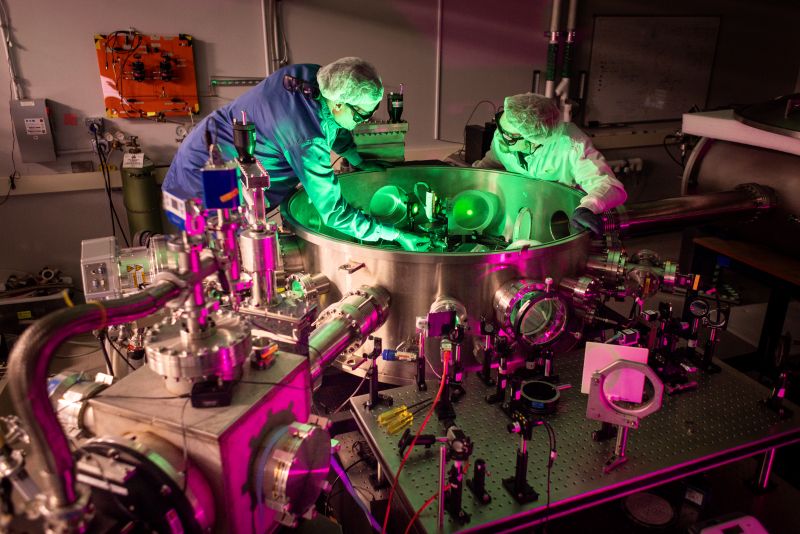
NSF ZEUS becomes the most powerful laser in the U.S.
The U.S. National Science Foundation Zettawatt-Equivalent Ultrashort pulse laser System (NSF ZEUS) laser facility at the University of Michigan now has the most powerful laser in the U.S., with roughly double the peak power of any other laser in the country. Researchers at NSF ZEUS achieved a laser pulse of two petawatts (2 quadrillion watts) in a brief pulse that lasted 25 quintillionths of a second. In that moment, the laser exceeded the total global output of electrical power by more than 100 times.
The NSF ZEUS laser is available to scientists across the U.S. for experiments in a range of fields, including quantum physics and plasma science with potential applications in medicine, national security, materials science and more.
"The fundamental research done at the NSF ZEUS facility has many possible applications, including better imaging methods for soft tissues and advancing the technology used to treat cancer and other diseases," said Vyacheslav Lukin, program director in the NSF Division of Physics, which oversees the ZEUS facility. "Scientists using the unique capabilities of ZEUS will expand the frontiers of human knowledge in new ways and provide new opportunities for American innovation and economic growth."

Credit: Marcin Szczepanski, Michigan Engineering
ZEUS stands for "Zettawatt Equivalent Ultrashort laser pulse System," and its name portends an even more powerful experiment expected later this year when accelerated electrons will be collided with laser pulses. In the frame of reference of the electrons moving very near the speed of light, the apparent laser power will be equivalent to a zettawatt, which is 1x10^21 watts or 1,000,000,000,000,000,000,000 watts.
The inaugural two-petawatt experiment is led by NSF Faculty Early Career Development Program awardee Franklin Dollar, professor of physics and astronomy at the University of California, Irvine.
"Having a national resource like this, which awards time to users whose experimental concepts are most promising for advancing scientific priorities, is really bringing high-intensity laser science back to the U.S.," says Dollar.
Distribution channels: Science
Legal Disclaimer:
EIN Presswire provides this news content "as is" without warranty of any kind. We do not accept any responsibility or liability for the accuracy, content, images, videos, licenses, completeness, legality, or reliability of the information contained in this article. If you have any complaints or copyright issues related to this article, kindly contact the author above.
Submit your press release